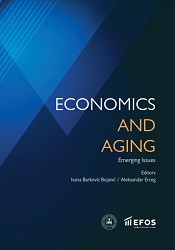Demographic Transition – Morbidity and Causes of Death of the Elderly from 2015 to 2019 in the Republic of Croatia
Demographic Transition – Morbidity and Causes of Death of the Elderly from 2015 to 2019 in the Republic of Croatia
Author(s): Agneza Aleksijević, Marko Aleksijević
Subject(s): Demography and human biology, Gerontology
Published by: Sveučilište Josipa Jurja Strossmayera u Osijeku, Ekonomski fakultet u Osijeku
Keywords: the elderly; aging; demographic transition; morbidity; causes of death;
Summary/Abstract: The aging of Europe’s population is a demographic phenomenon that indicates a decline in fertility and mortality rates and longer life expectancy. The population of the European Union (EU) is declining. EU residents made up 13.5% of the world’s population in 1960 and 6.9% in 2018, and it is projected that by 2070 that number will drop to 4%, considering the decline in the EU’s birth rate compared to global trends. This shows us the aging of the population and the impact on age structure and contributes to the inversion of the demographic pyramid. The current demographic situation affects economic, social, and health policy. Furthermore, it is impossible to disregard the COVID-19 disease that has changed the demographic structure in the EU and the world, which has completely changed our daily lives. This is especially true for the elderly population, a vulnerable group in this epidemic. Since 2019, the most frequently identified diseases and conditions in the elderly in the Republic of Croatia are circulatory system diseases (18.8%), musculoskeletal system and connective tissue diseases (11.95%), respiratory diseases (7.99%), and endocrine disorders, dietary diseases, and metabolic diseases (7.27%). There have been 247,372 hospitalizations of individuals over 65 recorded in the Republic of Croatia (292.79/1,000). According to the data on deaths from the Central Bureau of Statistics, 43,108 individuals aged 65 and older died in 2019 (in 2018, that number was 43,576), and the mortality rate for this age group was 51.02/1,000 (in 2018, the rate was 52.34/1,000). By reviewing the available data from the 2015-2019 period, the rankings of the most common diseases remained unchanged. The proportion of hospitalized individuals increased from 226,491 (in 2015) to 247,372 (in 2019), and the number of deaths, which shows a declining trend, ranged from 44,350 (in 2015) to 43,108 (in 2019). Aging requires optimization in the segment of health, participation, and safety. In contrast, improving life quality requires optimization following the needs through the active realization of one’ potential during life and participation in society.
Book: Economics and Aging: Emerging Issues
- Page Range: 15-40
- Page Count: 26
- Publication Year: 2022
- Language: English
- Content File-PDF

